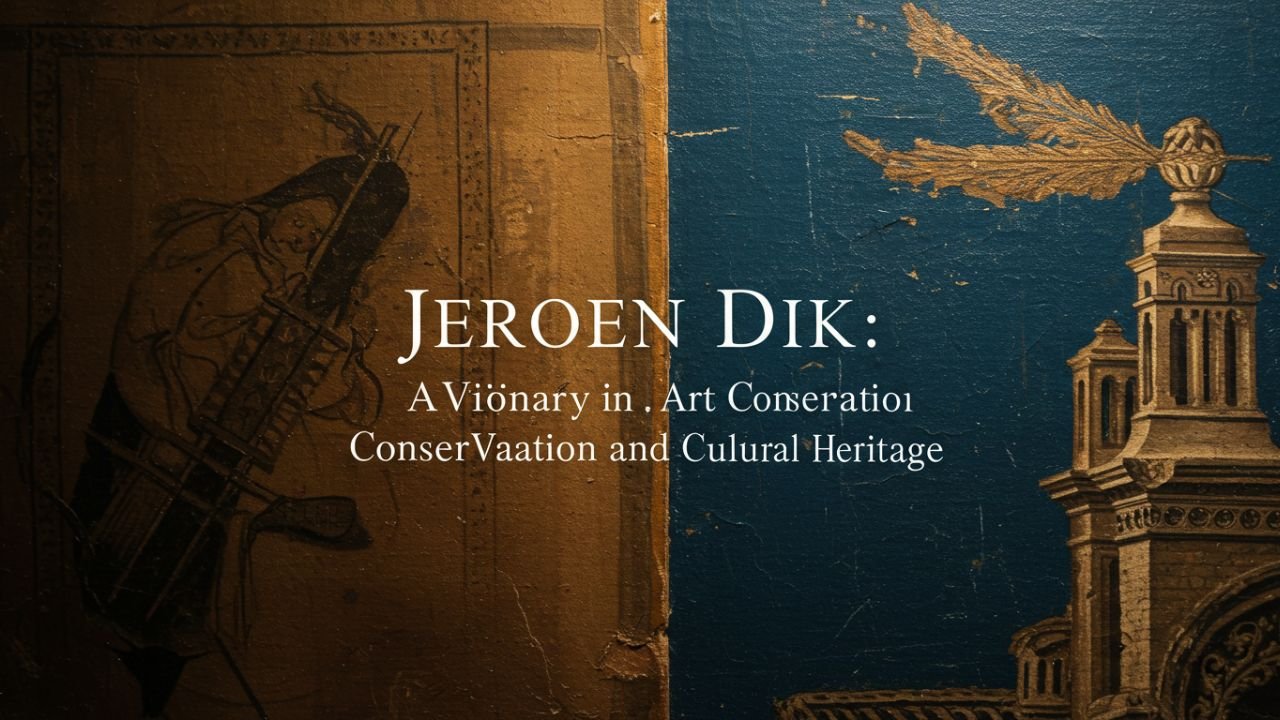When discussing the intersection of science, history, and creativity, the name Jeroen Dik consistently stands out. His career demonstrates how modern technology can shed light on centuries-old masterpieces, revealing secrets hidden beneath layers of paint. More than just a researcher, he is a pioneer who has redefined how experts, museums, and historians engage with cultural heritage.
The Journey of Jeroen Dik
The academic and professional journey of Jeroen Dik reveals his deep passion for both art and science. Trained in materials science and with a strong background in chemistry, Dik found a unique niche where technology meets culture. His decision to focus on heritage science opened doors to groundbreaking discoveries, helping scholars and the general public alike see art in ways that were once unimaginable.
Why Jeroen Dik’s Work Matters
Every artwork holds more than just its visible surface. Beneath brushstrokes, pigments, and varnishes often lie hidden sketches or earlier compositions. This is where Jeroen Dik’s expertise makes a difference. By using advanced imaging technologies and non-invasive tools, he uncovers these forgotten layers without harming the original piece.
His work ensures that future generations gain a more accurate understanding of art history, while also providing conservators with data to preserve paintings more effectively.
The Role of Technology in Jeroen Dik’s Research
One of the hallmarks of Jeroen Dik’s contributions is his use of high-tech methods in the study of historical artworks. Techniques like X-ray fluorescence scanning, 3D digital imaging, and spectral analysis allow him to:
-
Detect pigments and materials used by artists.
-
Reconstruct earlier versions of paintings.
-
Reveal the creative processes behind masterpieces.
For example, such methods have uncovered hidden sketches in paintings by legendary artists, offering a new perspective on how they worked and evolved.
Jeroen Dik’s Contribution to Cultural Preservation
Beyond discovery, Jeroen Dik is deeply committed to protecting cultural treasures. Climate change, pollution, and natural decay threaten historical artifacts every day. His studies help conservators understand how paints and materials deteriorate over time, offering scientific strategies for better preservation.
Thanks to his findings, museums now have access to cutting-edge tools that prolong the lifespan of invaluable collections while keeping them accessible to the public.
International Impact and Collaborations
Over the years, Jeroen Dik has collaborated with some of the most prestigious museums and institutions worldwide. His partnerships with the Rijksmuseum, the Louvre, and the National Gallery have brought incredible insights into iconic works of art.
These collaborations highlight his role as a global leader in heritage science. His findings often make headlines, captivating both academic circles and general audiences with discoveries that bring history back to life.
Education and Mentorship
A key aspect of Jeroen Dik’s career is his dedication to teaching. As a professor and mentor, he encourages students and young researchers to explore interdisciplinary approaches that combine art, history, and advanced science. Many of his students go on to build careers in conservation, further spreading the impact of his work.
His educational philosophy is rooted in the belief that science and culture are not separate worlds but partners in understanding human creativity.
The Broader Lessons from Jeroen Dik
The story of Jeroen Dik offers broader insights for anyone interested in art, innovation, or cultural identity:
-
Innovation thrives at the crossroads – blending art and technology creates new discoveries.
-
Preservation is essential – heritage is fragile, and proactive action ensures survival.
-
Education multiplies impact – by sharing knowledge, research has a longer-lasting effect.
These lessons extend far beyond museums, reminding us of the importance of protecting history in a fast-changing world.
Looking Ahead: The Future of Heritage Science
The future of cultural preservation is being shaped by figures like Jeroen Dik. As technologies such as artificial intelligence and machine learning become part of conservation, his pioneering work lays the foundation for even greater breakthroughs.
In the coming years, his methods will likely help museums and scholars analyze entire collections digitally, making cultural heritage more accessible to people worldwide.
Conclusion
In bridging science and art, Jeroen Dik has set a standard for how cultural heritage can be studied and preserved. His groundbreaking research, international collaborations, and dedication to education show how one individual can transform an entire field.
By uncovering hidden details and protecting fragile masterpieces, he not only enriches our understanding of the past but also safeguards it for the future. His journey proves that innovation, when guided by passion and responsibility, can preserve humanity’s greatest treasures for generations to come.
